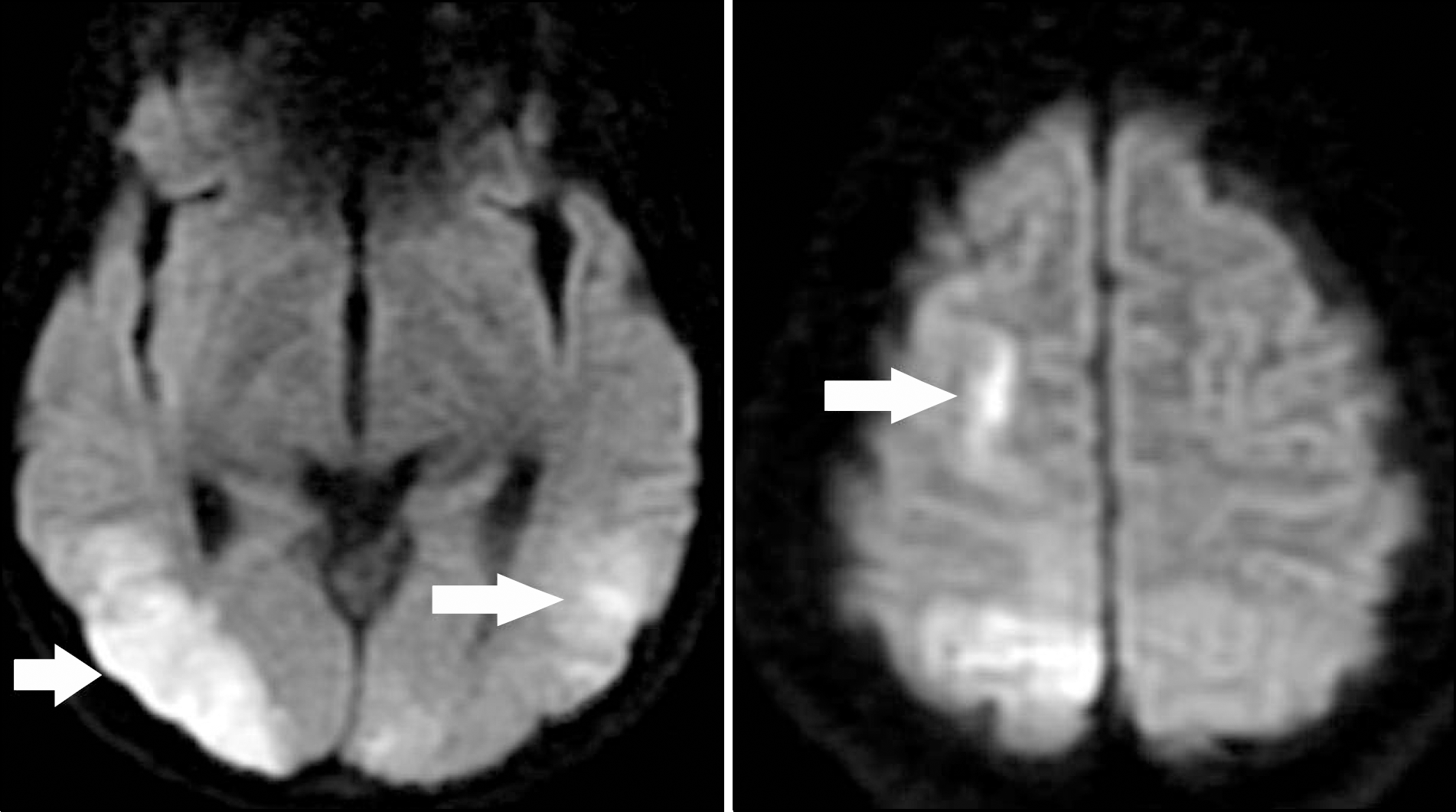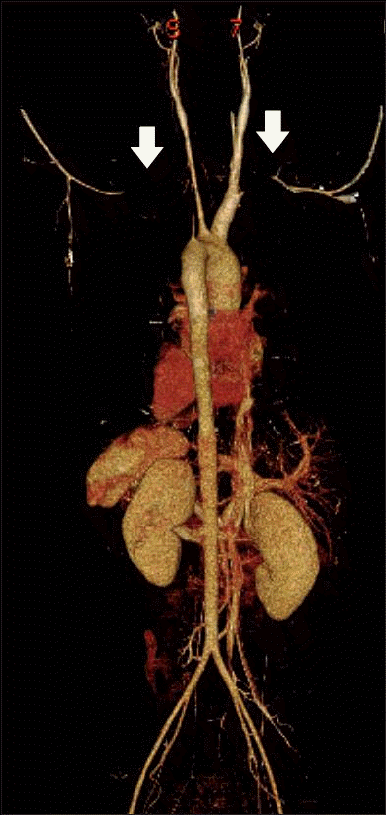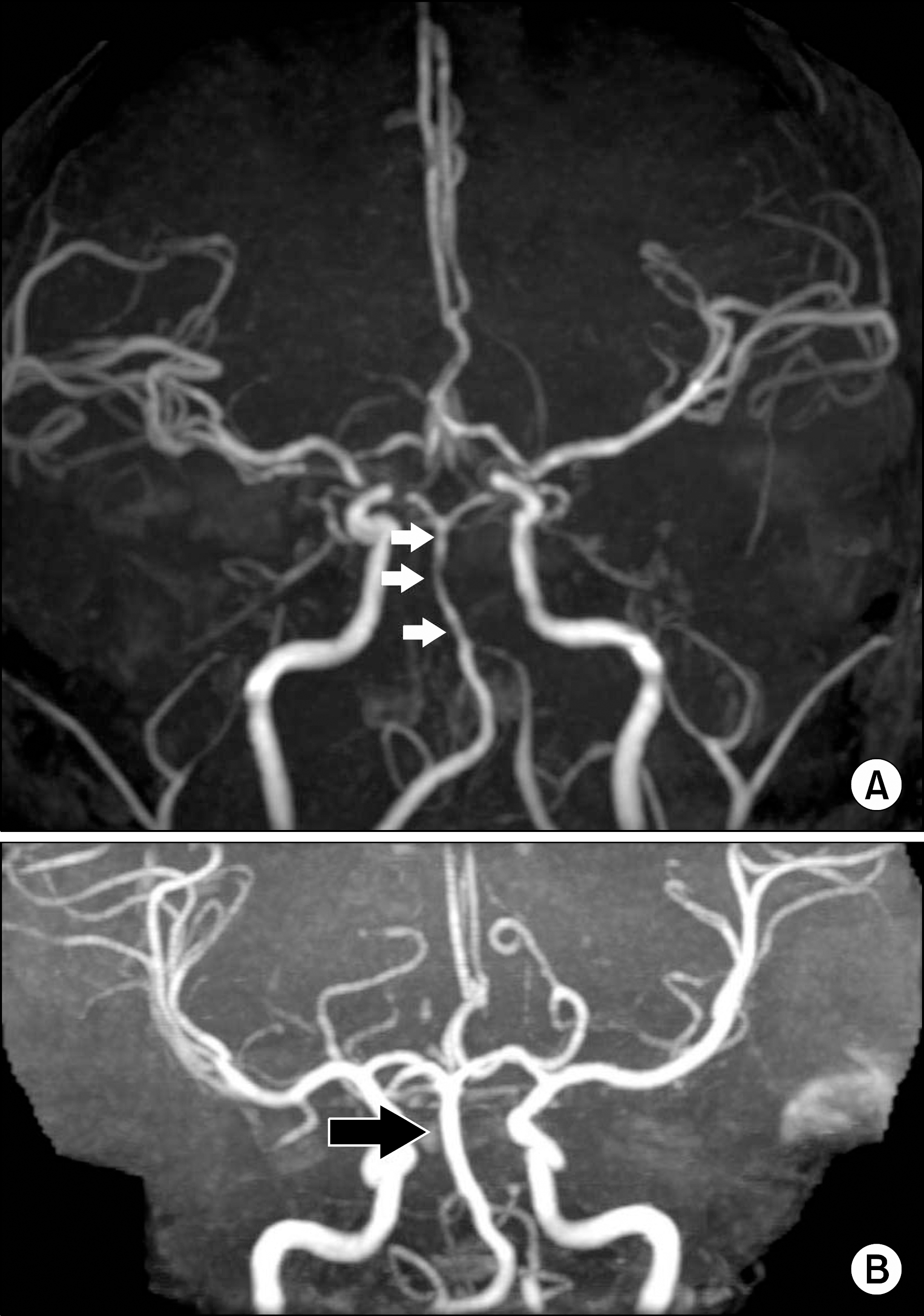Abstract
Takayasu's arteritis (TA) is a chronic inflammatory vascular disease that mainly affects large vessels. Central nervous system involvement occurs in about 20% of cases with rare involvement of intracranial vessel, and its typical manifestation is cerebral ischemia or stroke. Reversible cerebral vasoconstriction syndrome (RCVS) is a group of disorders with prolonged, but reversible vasoconstriction of the cerebral arteries with acute-onset, severe, recurrent headaches with or without neurologic signs or symptoms. We report a case of TA in a 17-year old girl who presented with secondary RCVS. She complained of thunderclap headache, seizure and acute stroke. 3-dimensional computed tomography scan and magnetic resonance angiography of head revealed irregular thickening of aortic wall and its main branches with multifocal narrowing of intracranial basilar artery, which improved after oral nimodipine intake. This case highlights RCVS as an unusual manifestation of TA and demonstrates the diagnosis, treatment and response to therapy of RCVS in TA, which resolved after treatment with calcium channel blocker.
References
1. Kerr GS, Hallahan CW, Giordano J, Leavitt RY, Fauci AS, Rottem M, et al. Takayasu arteritis. Ann Intern Med. 1994; 120:919–29.

2. Arend WP, Michel BA, Bloch DA, Hunder GG, Calabrese LH, Edworthy SM, et al. The American College of Rheumatology 1990 criteria for the classification of Takayasu arteritis. Arthritis Rheum. 1990; 33:1129–34.

3. Longo D, Fauci A, Kasper D, Hauser S, Jameson J, Loscalzo J. Harrison's principles of internal Medicine. 18th ed.p. 2. New York: McGraw-Hill;2011.
4. Calabrese LH, Dodick DW, Schwedt TJ, Singhal AB. Narrative review: reversible cerebral vasoconstriction syndromes. Ann Intern Med. 2007; 146:34–44.

5. Uchida Y, Matsukawa N, Oguri T, Sakurai K, Miura T, Iwagaitsu S, et al. Reversible cerebral vasoconstriction syndrome in a patient with Takayasu's arteritis. Intern Med. 2011; 50:1611–4.

6. Singhal AB. Cerebral vasoconstriction without sub-arachnoid blood: associated conditions, clinical and neu-roimaging characteristics. Ann Neurol. 2002; S:59–60.
7. Mwipatayi BP, Jeffery PC, Beningfield SJ, Matley PJ, Naidoo NG, Kalla AA, et al. Takayasu arteritis: clinical features and management: report of 272 cases. ANZ J Surg. 2005; 75:110–7.





 PDF
PDF ePub
ePub Citation
Citation Print
Print





 XML Download
XML Download